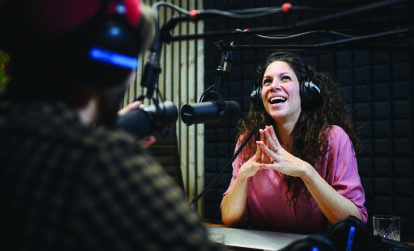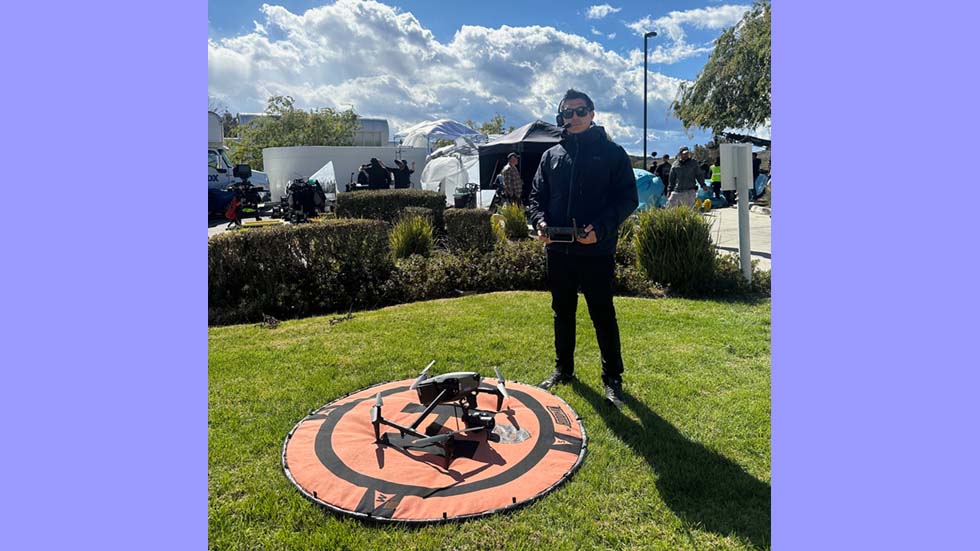NAB Show: Podcasters Look for Growth Opportunities
As the medium’s popularity keeps rising, creators are finding new ways to grow, retain and monetize audiences

Podcast listenership continues to soar, growing by nearly 10% from 2023 to 2024, according to Triton’s U.S. Podcast Report, released in January. More than 100 million listeners tune into their favorite news, entertainment and other podcasts every week.
When factoring in growth since 2021, that listenership figure rises to 23%, which was on top of record gains made during the COVID era, and — you get the picture. But with the industry on a roll and so many new practitioners joining the ranks every year, podcasters are looking for ways to inch ahead of the competition.
“Podcasters have to figure out what they can do to not only get the first listen, but the second listen, the third listen, the fourth listen and the fifth listen,” says John Wordock, an industry veteran who has held leadership roles at Cumulus Podcast Network and The Wall Street Journal.
“At the end of the day, it’s about recruiting and then retaining listeners, and then finding new ones.”
Exactly how to go about implementing that goal, with the objective of generating more revenue, can play out in many different strategies. One of the most popular right now is pivoting from being merely a podcaster behind a microphone to a platform-crossing content creator.
“It is quite clear that there are more avenues to create revenue than there are in New York City,” Wordock said. He cited tactics like show sponsorships, dynamically inserted ads, merchandise, subscription levels with paid bonus content and video. The list expands in myriad directions from there.
OPTIMIZING FOR VOICE SEARCH
Get the TV Tech Newsletter
The professional video industry's #1 source for news, trends and product and tech information. Sign up below.
On top of those growth tools, Rhea Allen, president and CEO of marketing agency Peppershock Media, suggested optimizing for how consumers are searching for and finding podcasts. And with many of those listeners using voice search in their cars, with smartphones or IoT devices at home, she recommends tailoring how podcasters list and describe their episodes for that use case.
“A lot of times people will pose questions when they’re asking their devices to do something, using the AI voice tools,” she said. “Think about how you construct your show notes and optimize for not just regular search engine optimization, but voice search optimization as well.”
As podcast creators continue to expand their audiences and revenue, new tools — or challenges, depending on your perspective — such as artificial intelligence are disrupting workflows across the industry. But Google’s NotebookLM and products from companies like Wondercraft AI and ElevenLabs don’t have to feel like a threat to human podcasters.
“You could really rig these things up to spit out a podcast every half an hour without a human having any part in it, and that’s disconcerting,” said Gary Levitt, an audio engineer and co-founder of Future Moments, which makes apps for content creation.
Far from an AI detractor, though, Levitt said he sees any tools that can help people create good as good — so long as they are managed ethically.
“I do like the idea of people who don’t necessarily want to use their voice or be on microphone to be able to type and write things and then have an AI voice speak it. I like anything that opens the gates for someone who wants to be creative.”
Nor is Wordock necessarily worried, either. “I think AI can be very helpful in terms of production and research, and there are also implications for advertising,” he said. It all comes down to what listeners want to listen to, and as of now, big personalities are making the most popular content. “I want to hear real personalities in my podcasts,” Wordock said. “As long as podcasters in audio and video form reveal themselves to be human and interact or show their vulnerability or humor, that’s stuff AI can’t really do. Who wants to listen to a phony piece of artificial intelligence when you can hear the real deal?”
MANY USES FOR AI
But the impacts of AI on podcasting go far beyond approximating a human voice. A plethora of tools are available to help podcasters grow their audiences by repurposing recordings to create adjacent content that can reach people in different ways through social media and owned promotional tools like email newsletters.
“One podcast can get repurposed for various things,” Allen said. “We use Riverside.FM to record our podcast, and it automatically takes key moments in the show and makes little clips that you can use for social media or audiograms on Instagram. You can take and use the transcript, summarize it and turn that into content, as well.”
While being on the leading edge of technology will certainly give podcasters a leg up, Allen advised old-fashioned networking and relationship building — albeit with a modern touch — to those hoping to grow their audience and revenue along with it.
“The other thing that is trending quite a bit is doing kind of preproduction meetings, getting to know the person that they’re interviewing, and developing a relationship with them,” she said. “After you’ve had them on the show, how can you continue to leverage each other’s capabilities?”
COPYRIGHT NAB 2025.
